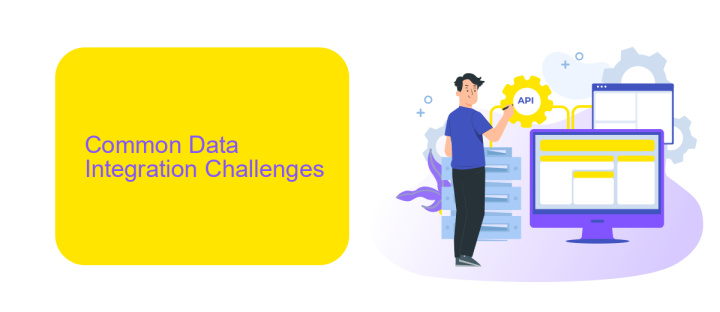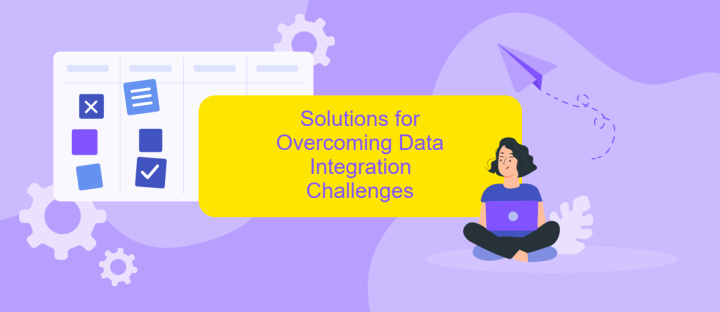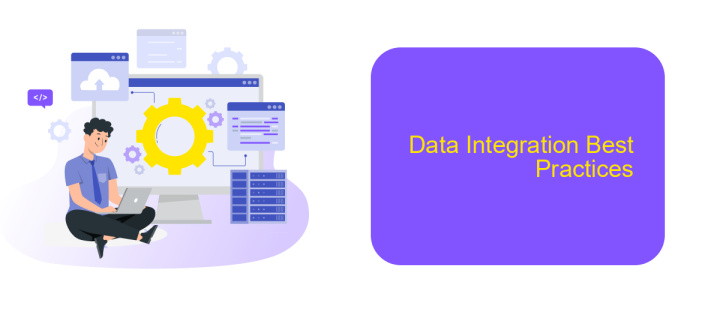Data Integration Challenges and Solutions
In today's data-driven world, the seamless integration of diverse data sources is crucial for informed decision-making and operational efficiency. However, organizations often face significant challenges in achieving this integration due to disparate systems, data quality issues, and evolving technologies. This article explores the common obstacles in data integration and presents effective solutions to overcome these hurdles, ensuring a cohesive and reliable data ecosystem.
Introduction
Data integration is a critical process in today's data-driven world, enabling organizations to combine data from various sources into a unified view. This process, however, comes with its own set of challenges that can hinder effective data utilization and decision-making. Organizations often face issues such as data inconsistency, data silos, and the complexity of integrating disparate systems.
- Data inconsistency: Different data sources may have conflicting information.
- Data silos: Isolated data systems prevent holistic analysis.
- Integration complexity: Combining various systems can be technically challenging.
To address these challenges, businesses can leverage integration platforms like ApiX-Drive. This service simplifies the integration process by offering pre-built connectors and automated workflows, allowing for seamless data synchronization across multiple systems. By utilizing such solutions, organizations can achieve more accurate and comprehensive data insights, ultimately driving better business outcomes.
Common Data Integration Challenges

Data integration often presents several challenges, one of the most common being data silos. Organizations frequently store data across various systems and platforms, making it difficult to achieve a unified view. This fragmentation can lead to inconsistencies, errors, and inefficiencies, hindering effective decision-making. Additionally, the process of extracting, transforming, and loading (ETL) data can be complex and time-consuming, requiring specialized skills and tools.
Another significant challenge is data quality and consistency. Integrating data from disparate sources often results in discrepancies due to differing data formats, standards, and validation rules. Ensuring data accuracy and reliability is crucial for any integration project. Tools like ApiX-Drive can help mitigate these challenges by automating data synchronization across multiple platforms, ensuring seamless integration and consistent data flow. By leveraging such services, organizations can streamline their data integration processes, reducing manual effort and minimizing errors.
Solutions for Overcoming Data Integration Challenges

Overcoming data integration challenges requires a combination of strategic planning, the right tools, and continuous monitoring. Effective solutions can streamline processes and ensure data consistency across systems.
- Data Mapping and Transformation: Use robust ETL (Extract, Transform, Load) tools to map and transform data from various sources into a unified format.
- API Integration: Leverage platforms like ApiX-Drive to automate data integration across different applications, reducing manual effort and minimizing errors.
- Data Quality Management: Implement data quality tools to cleanse and validate data before integration, ensuring accuracy and reliability.
- Scalable Infrastructure: Invest in scalable cloud solutions to handle increasing data volumes without compromising performance.
- Continuous Monitoring: Set up real-time monitoring and alert systems to quickly identify and resolve integration issues.
By adopting these solutions, organizations can effectively address data integration challenges, leading to improved operational efficiency and better decision-making. Utilizing tools like ApiX-Drive can significantly enhance the integration process, providing seamless connectivity between disparate systems.
Data Integration Best Practices

Effective data integration is crucial for businesses aiming to leverage diverse data sources for strategic decision-making. To ensure seamless integration, it’s essential to follow best practices that minimize errors and enhance efficiency.
First, establish clear data governance policies that define data ownership, quality standards, and access controls. These policies help maintain data integrity and security throughout the integration process. Additionally, using a robust data integration platform like ApiX-Drive can simplify the process by providing pre-built connectors and automated workflows.
- Define clear data governance policies
- Utilize a robust data integration platform like ApiX-Drive
- Ensure data quality and consistency
- Implement real-time data synchronization
- Regularly monitor and audit data flows
By adhering to these best practices, organizations can streamline their data integration efforts, ensuring that data is accurate, timely, and secure. This, in turn, enables more informed decision-making and drives business growth.


Conclusion
In conclusion, data integration remains a critical challenge for many organizations, necessitating robust solutions to ensure seamless data flow and accuracy. The complexities involved in integrating disparate data sources can lead to issues such as data inconsistency, security vulnerabilities, and operational inefficiencies. However, with the right strategies and tools, these challenges can be effectively mitigated, paving the way for improved decision-making and enhanced business performance.
One such tool that stands out in facilitating seamless data integration is ApiX-Drive. By offering a user-friendly interface and powerful automation capabilities, ApiX-Drive enables businesses to connect various data sources effortlessly. Its ability to handle complex integration tasks without requiring extensive technical expertise makes it an invaluable asset for organizations looking to streamline their data workflows. As businesses continue to evolve, leveraging solutions like ApiX-Drive will be essential in overcoming data integration challenges and achieving operational excellence.
FAQ
What are the common challenges in data integration?
How can data integration improve business decision-making?
What are the best practices for successful data integration?
How can automation tools help in data integration?
What should be considered when choosing a data integration tool?
Routine tasks take a lot of time from employees? Do they burn out, do not have enough working day for the main duties and important things? Do you understand that the only way out of this situation in modern realities is automation? Try Apix-Drive for free and make sure that the online connector in 5 minutes of setting up integration will remove a significant part of the routine from your life and free up time for you and your employees.

